Sleight of hand refers to fine motor skills when used by performing artists in different art forms to entertain or manipulate. It is closely associated with close-up magic, card magic, card flourishing and stealing. Because of its heavy use and practice by magicians, sleight of hand is often confused as a branch of magic; however, it is a separate genre of entertainment and many artists practice sleight of hand as an independent skill. Sleight of hand pioneers with worldwide acclaim include Dan and Dave, Ricky Jay, Derek DelGaudio, David Copperfield, Yann Frisch, Norbert Ferré, Dai Vernon, Cardini, Tony Slydini, Helder Guimarães and Tom Mullica.

Card manipulation is the branch of magic that deals with creating effects using sleight of hand techniques involving playing cards. Card manipulation is often used in magical performances, especially in close-up, parlor, and street magic. Some of the most recognized names in this field include Dai Vernon, Tony Slydini, Ed Marlo, S.W. Erdnase, Richard Turner, John Scarne, Ricky Jay and René Lavand. Before becoming world-famous for his escapes, Houdini billed himself as "The King of Cards". Among the more well-known card tricks relying on card manipulation are Ambitious Card, and Three-card Monte, a common street hustle also known as Find the Lady.
A trick deck is a deck of playing cards that has been altered in some way to allow magicians to perform certain card tricks where sleight of hand would be too difficult or impractical.

Harry Bouton Blackstone Jr. was an American stage magician, author, and television performer. He is estimated to have pulled 80,000 rabbits from his sleeves and hats.

John Scarne was an American magician and author who was particularly adept at playing card manipulation. He became known as an expert on cards and other games, and authored a number of popular books on cards, gambling, and related topics.
The Ambitious Card, or Elevator Card, is a magic effect in which a playing card seems to return to the top of the deck after being placed elsewhere in the middle of the deck. This is a classic effect in card magic and serves as a study subject for students of magic. It is also known as the "Trick that Fooled Houdini", as Harry Houdini was unable to determine how the trick was done when it was performed for him, multiple times, by Dai Vernon. Most performing card magicians will have developed their own personal Ambitious Card routine.
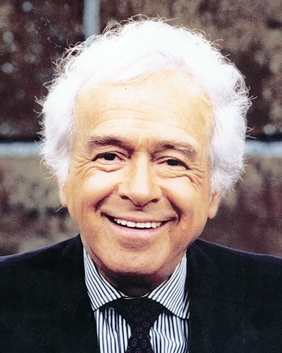
Harry Lorayne was an American mnemonist, magician, and author who was called "The Yoda of Memory Training" and "The World's Foremost Memory-Training Specialist" by Time magazine. He was well known for his incredible memory demonstrations and appeared on numerous television shows including 24 times on The Tonight Show Starring Johnny Carson. His book The Memory Book was a New York Times bestseller. His card magic, especially his innovations in card sleights, is widely emulated by amateur and professional magicians.
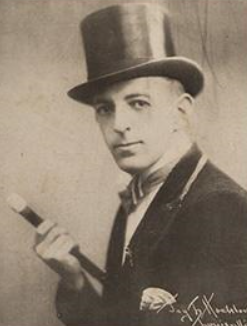
Richard Valentine Pitchford was a master magician under the name Cardini, whose career spanned almost half a century. Born in Britain, he worked chiefly in the United States of America.

David Frederick Wingfield Verner, better known by his stage names Dai Vernon or The Professor, was a Canadian magician.

Tony Slydini, simply known as Slydini, was a world-renowned magician. His mastery, expertise, originality and innovative approach to close-up artistry magic, earned him a legendary reputation in the magic world. He traveled the world performing for the public as well as performing and lecturing fellow magicians. As a result, he served as an inspiration to generations of well-known magicians, celebrities and entertainers, including Doug Henning, Dick Cavett, Bill Bixby, Ricky Jay, David Copperfield and countless others. Although he was best known as a master of close-up artistry, he continually demonstrated an extraordinary performing ability and during his lifetime was responsible for a long series of books, films and publications highlighting his mastery of the magical crafts. For his work, he received the highest honors that his profession could bestow, including both the coveted Masters Fellowship Award and Performing Fellowship Award from the Academy of Magical Arts. During his lifetime, Tony Slydini was inducted into the Society of American Magicians Hall of Fame as a Living Legend.

Self-working magic is a commonly used term in magic to refer to tricks that work simply from following a fixed procedure, rather than relying on trickery, sleight-of-hand, or other hidden moves.
Spelling Bee may refer to one of several card tricks that revolve around the spelling of card types, audience member names, or words suggested by the audience. Many make use of decks prepared in advance in order to provide the illusion of spelling card names in a particular sequence. Jean Hugard's Encyclopedia of Card Tricks lists a number of such spelling-based tricks, many of which are considered to be self-working.
The Circus Card Trick is a self-working card trick where the performer uses verbal misdirection to prompt the participant into betting that the performer has failed to execute the trick correctly. The performer exploits the ambiguous wording of their patter to win the bet in a manner unexpected by the audience. It is often recommended for beginning magicians due to its entertaining and self-working nature.
The Si Stebbins stack is a cyclic mathematical card stack. It was popularized by the magician Si Stebbins, and can be constructed from a standard 52-card deck. Frequently used in card magic, its properties allow the position and value of each card in a deck to be determined.

The Expert at the Card Table, is an extensive book on the art of sleight of hand published in 1902 by S. W. Erdnase, a pseudonymous author whose identity has remained a mystery for over a century. As a detailed manual of card sharps, the book is considered to be one of the most influential works on magic or conjuring with cards.
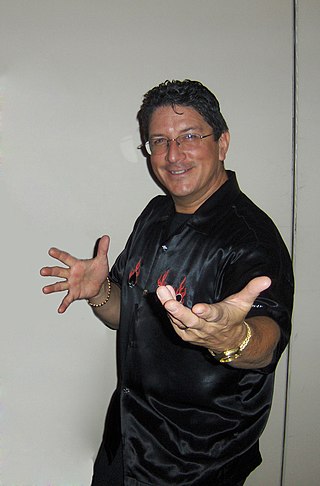
Daryl Easton, known professionally as Daryl and born Daryl Martinez, was an American magician based in Las Vegas. In his marketing he used the self-proclaimed title of "The Magician's Magician". Daryl usually went by his forename only.
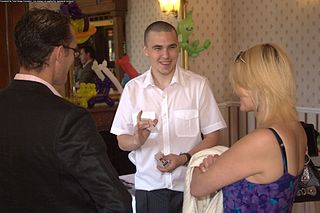
Close-up magic is magic performed in an intimate setting usually no more than 3 meters from one's audience and is usually performed while sitting at a table.
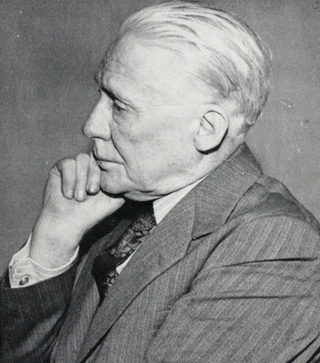
Jean Hugard was an Australian professional magician and author, often co-writing with Frederick Braue. Among his better known works are the books The Royal Road to Card Magic, Encyclopedia of Card Tricks, and Expert Card Technique.

Magic, which encompasses the subgenres of illusion, stage magic, and close-up magic, among others, is a performing art in which audiences are entertained by tricks, effects, or illusions of seemingly impossible feats, using natural means. It is to be distinguished from paranormal magic which are effects claimed to be created through supernatural means. It is one of the oldest performing arts in the world.
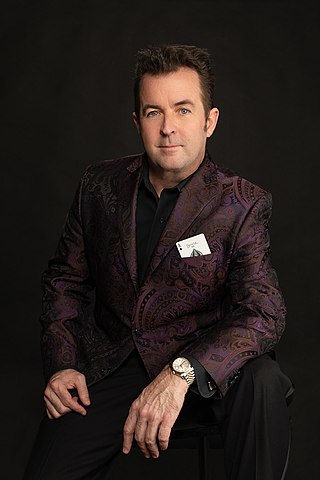
John George Fancher, known professionally as John George, is an American magician. Working professionally since 1995, John George has performed at magic venues throughout the country and abroad while winning awards in a wide variety of magic competitions.













